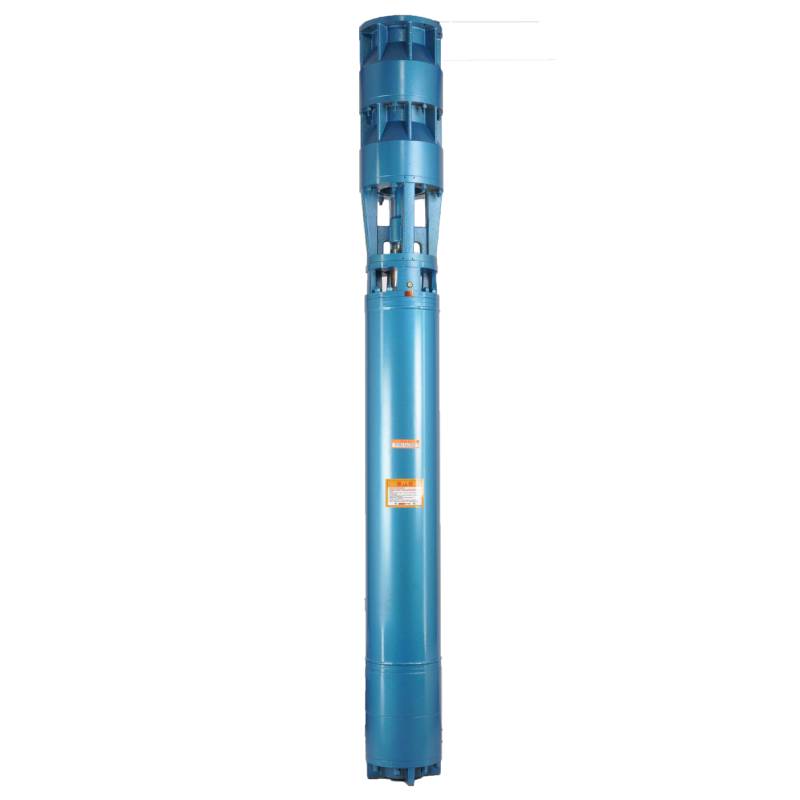Jul . 27, 2024 11:29 Back to list
Choosing the Right Submersible Water Pump for Your Home or Garden Needs
Submersible Water Pumps An Overview
Submersible water pumps are an essential component in various applications that require moving water from one place to another. These pumps are designed to operate while submerged in water, making them highly efficient for tasks such as draining flooded areas, irrigating agricultural fields, and providing water supply to residential homes. Unlike traditional pumps that sit above the water level, submersible pumps are submerged completely, which allows them to push water to the surface rather than pulling it.
How Submersible Water Pumps Work
The operation of a submersible water pump is based on a simple principle they use a motor encased in a waterproof housing that drives an impeller. The motor is typically located above the pump and is connected to the impeller through a shaft. When the pump is turned on, the motor rotates the impeller, creating a low-pressure area around it. This drop in pressure causes water to be drawn into the pump through an intake screen located at the base. The impeller then forces the water upward through a discharge pipe, where it can be directed to its intended location.
One of the significant advantages of submersible pumps is their ability to operate in deep water conditions. They are commonly used in wells that require water to be lifted from significant depths. This makes them ideal for agricultural use, where they can pump groundwater to the surface for irrigation, especially in areas where surface water is scarce.
Applications in Various Industries
Submersible water pumps are versatile and find applications in a wide array of industries. In construction, they are often used for dewatering sites, ensuring work environments are safe and dry. They are also employed in sewage and wastewater management systems to transport sewage from homes or businesses to treatment facilities. Municipalities frequently use submersible pumps for stormwater management to prevent urban flooding during heavy rainfall.
In residential settings, submersible pumps are popular for maintaining aquariums, swimming pools, and even fountains. They can also be found in basement sump systems where they remove water that accumulates to prevent flooding and water damage.
Types of Submersible Pumps
submersible water pump

Submersible water pumps come in several different types, each designed for specific applications
. Some of the most common types include1. Sump Pumps These are used to remove water from basements and crawl spaces, typically triggered by a float switch that turns the pump on when water levels rise.
2. Well Pumps Designed to draw water from underground wells, these pumps are used primarily in residential and agricultural applications.
3. Drainage Pumps Often used in construction sites, these pumps effectively remove water from areas that have accrued excess water, such as excavations or trenches.
4. Effluent Pumps These are designed to handle wastewater that has undergone minimal treatment, making them suitable for septic systems.
Benefits of Submersible Water Pumps
Submersible pumps offer several advantages over conventional pumps. Their efficient design allows for lower energy consumption, as they do not have to pull water upward. Additionally, being submerged can reduce the noise associated with pump operation, which is beneficial in residential areas. They are also generally more reliable, as their sealed units are protected against flooding and debris, which can damage portable pumps.
In conclusion, submersible water pumps are vital tools in modern water management across various sectors. Their efficiency, versatility, and ability to work submerged make them indispensable for tasks ranging from dewatering construction sites to irrigating crops. As technology improves, we can expect even greater efficiencies and innovations in submersible pump designs, further enhancing their utility in our daily lives.
-
Submersible Water Pump: The Efficient 'Power Pioneer' of the Underwater World
NewsJul.01,2025
-
Submersible Pond Pump: The Hidden Guardian of Water Landscape Ecology
NewsJul.01,2025
-
Stainless Well Pump: A Reliable and Durable Pumping Main Force
NewsJul.01,2025
-
Stainless Steel Submersible Pump: An Efficient and Versatile Tool for Underwater Operations
NewsJul.01,2025
-
Deep Well Submersible Pump: An Efficient 'Sucker' of Groundwater Sources
NewsJul.01,2025
-
Deep Water Well Pump: An Efficient 'Sucker' of Groundwater Sources
NewsJul.01,2025
-
 Submersible Water Pump: The Efficient 'Power Pioneer' of the Underwater WorldIn the field of hydraulic equipment, the Submersible Water Pump has become the core equipment for underwater operations and water resource transportation due to its unique design and excellent performance.Detail
Submersible Water Pump: The Efficient 'Power Pioneer' of the Underwater WorldIn the field of hydraulic equipment, the Submersible Water Pump has become the core equipment for underwater operations and water resource transportation due to its unique design and excellent performance.Detail -
 Submersible Pond Pump: The Hidden Guardian of Water Landscape EcologyIn courtyard landscapes, ecological ponds, and even small-scale water conservancy projects, there is a silent yet indispensable equipment - the Submersible Pond Pump.Detail
Submersible Pond Pump: The Hidden Guardian of Water Landscape EcologyIn courtyard landscapes, ecological ponds, and even small-scale water conservancy projects, there is a silent yet indispensable equipment - the Submersible Pond Pump.Detail -
 Stainless Well Pump: A Reliable and Durable Pumping Main ForceIn the field of water resource transportation, Stainless Well Pump has become the core equipment for various pumping scenarios with its excellent performance and reliable quality.Detail
Stainless Well Pump: A Reliable and Durable Pumping Main ForceIn the field of water resource transportation, Stainless Well Pump has become the core equipment for various pumping scenarios with its excellent performance and reliable quality.Detail
